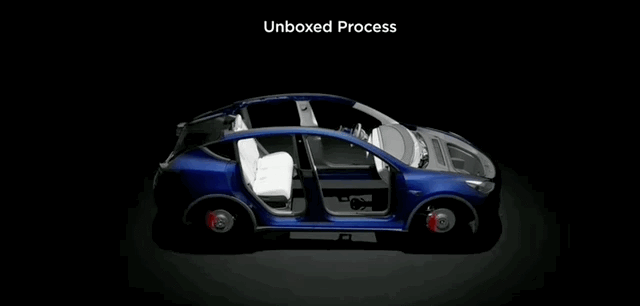With Musk at the helm, Tesla is not just about producing and selling cars. In fact, even from the beginning, Tesla never intended to solely focus on manufacturing and selling vehicles. The company’s initial slogan was “Accelerate the world’s transition to sustainable energy,” which was reflected in both the first chapter of the Secret Master Plan in 2006, and the second chapter in 2016.
Now, with the release of the third chapter of the Secret Master Plan on March 2nd, the core theme remains the same: accelerating the world’s transition to sustainable energy. However, the goals have become even more ambitious, so much so that they might be perceived as crazy and unrealistic. Tesla wants to eliminate fossil fuels.
Undoubtedly, Musk is a madman. He embodies both the traits of an elite entrepreneur and the negative qualities of a reckless, impulsive addict. Tesla has had a significant impact on the burgeoning new energy vehicle market in China, serving as a model during initial development, a catalyst during mid-term growth, and a major influencer on current sales.
However, it cannot be denied that Musk is a rare breed of entrepreneur, a breakaway from tradition. From founding PayPal to launching SpaceX, and now at the helm of Tesla, Musk’s every major project has been about challenging convention and breaking the shackles of “historical inertia.”## Don’t Use Fossil Fuels If You Can Use Electricity
On the activity day, Musk said that the current energy economy is polluted and wasted. More than 80% of global energy comes from fossil fuels, but their utilization rate is very low, only one-third, and the rest dissipates into the air in the form of waste heat. Renewable energy such as solar and wind energy are clean and sustainable.

In order to change the status quo and make the earth on the path to sustainable energy, Tesla has developed a long-term plan of 10-20 years to gradually replace fossil fuels.
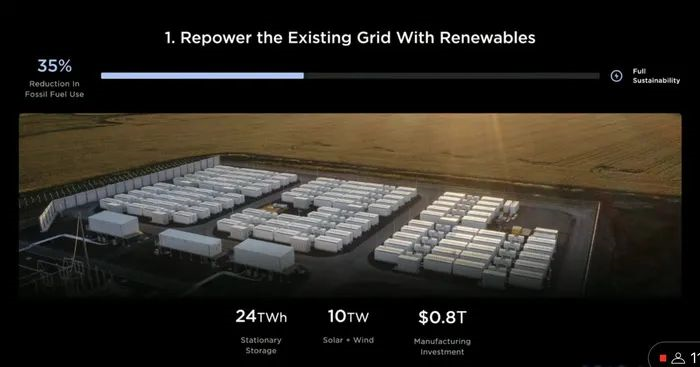
The first step is to use renewable energy to power the power grid, regulate the balance of power consumption and generation through a fixed 24TWh energy storage battery, and use solar and wind power to achieve a power generation capacity of 10TW to reduce fossil fuel usage by 35%.
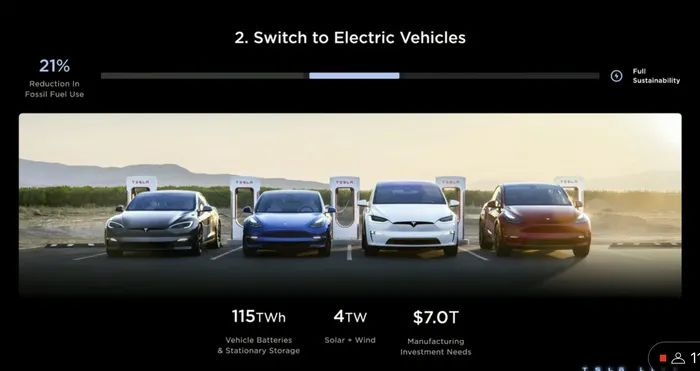
The second step is to fully transition to electric vehicles and encourage more consumers to switch from gasoline cars to electric cars. To achieve this, Tesla plans to eventually achieve an annual production target of 20 million vehicles and reduce fossil fuel usage by 21%. As for how to achieve the goal of producing 20 million vehicles annually, we will discuss it in the next section.

The third step is to promote the use of heat pumps in homes, businesses, and industries to replace traditional PTCs. For example, many home appliances such as water heaters and air conditioners that use PTC heating, which is inefficient. The essence of the heat pump is to transfer heat rather than provide heat, so it can generate several times the heat energy consumed. Through the use of heat pumps, Tesla expects to reduce fossil fuel usage by 22%.The fourth step is to use sustainable energy instead of traditional energy in heavy industry, such as steel production which requires high temperature and heat, in order to reduce fossil fuel usage by 17%.
The fifth step is to use sustainable energy for airplanes and ships, in order to reduce fossil fuel usage by 5%.
In summary, Tesla hopes to produce clean and sustainable secondary energy (electricity) and even tertiary energy (hydrogen) through solar and wind power, and apply it to society and industry, so that society can break free from its dependence on fossil fuels and the world can move towards the comprehensive utilization of renewable energy.
Of course, compared with the term “plan”, these operations and goals mentioned by Tesla in the secret master plan part three sound more like Tesla’s vision for the future energy structure, as these goals are somewhat unrealistic, which Tesla is undoubtedly aware of.
However, Tesla will still adhere to the path of sustainable development and continue to attract others to follow the same path. For example, Tesla will open up its charging network to third-party vehicles, which means non-Tesla owners can also enjoy the convenience of more than 40,000 Tesla charging stations in operation in 46 countries. Furthermore, in terms of clean energy utilization and energy storage, Tesla also deployed a 100MW solar power generation and 2462MWh energy storage system in the fourth quarter of last year.## 18K to Buy a Model 3 is No Longer a Dream
As part of the implementation of the secret master plan, one of the main focuses of the event day involves improvements in production methods, processes, and technology. The ultimate goal of these improvements is to increase production efficiency and reduce production costs.
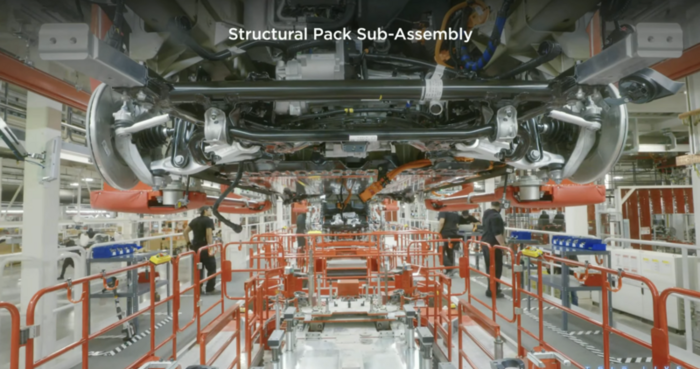
For example, Tesla will use a one-time assembly technique on the production line, changing the serial production line into a serial-parallel production line, thus increasing automation in production.
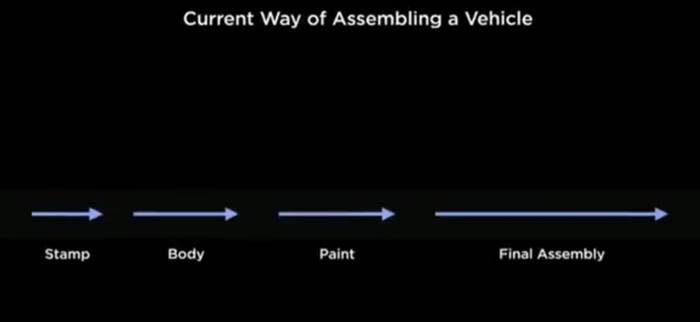
At present, the way vehicles are assembled is that they are assembled one by one according to the priority of the processes in the workshop. In general, the structural components of the car body are assembled together and sprayed with paint before interior assembly, powertrain installation, and front and rear axle suspensions are added. Although this production method has undergone minor improvements over the past few decades, it has essentially remained unchanged.
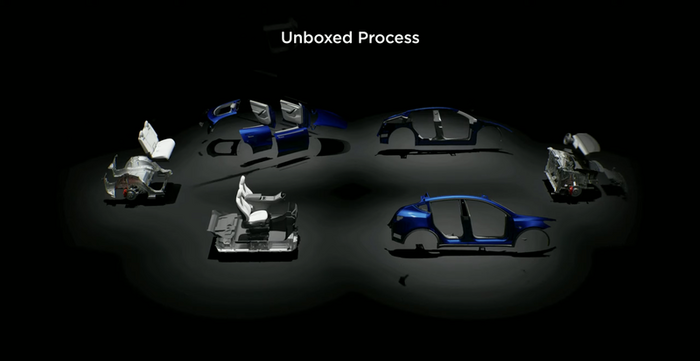

However, Tesla is taking a different approach. In the next generation of platform vehicle manufacturing, Tesla will dismantle the car body into several different parts for assembly. Based on images shown by Tesla, the four doors, hood, front panel and front engine compartment, rear panel and rear engine compartment, battery and front seats, and the left and right frame of the car body will all go through separate assembly or processing, and then be assembled together like building blocks.
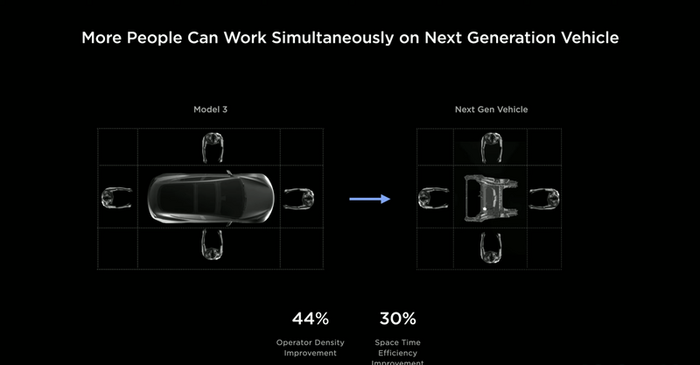
By doing so, more workers can participate in the vehicle assembly process at the same time, achieving a 44% increase in production line operation density and a 30% increase in space utilization and efficiency. Ultimately, this will also drive a 50% increase in economic benefits and a 50% reduction in factory footprint.
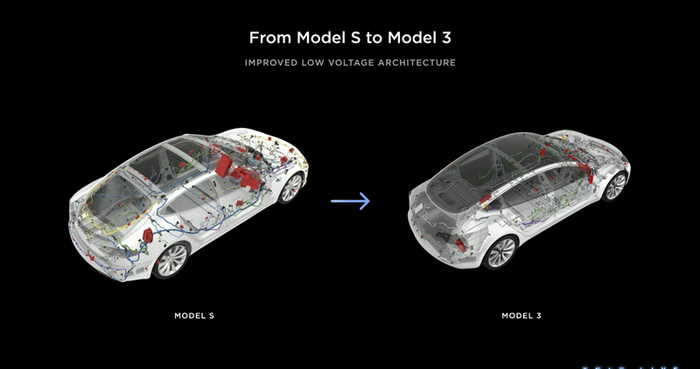
In addition to optimizing production lines, Tesla is constantly optimizing various components by using alternative resources, increasing self-research ratio, and reducing costs, weight, and energy consumption, thereby reducing the use of different resources in Tesla models. For example, compared with the early Model S, the Model 3 uses a body domain processor to reduce the use of body cables, reducing the total length of the cables from 3 km in Model S to 1.5 km in Model 3, and further to 100 m in Model Y.
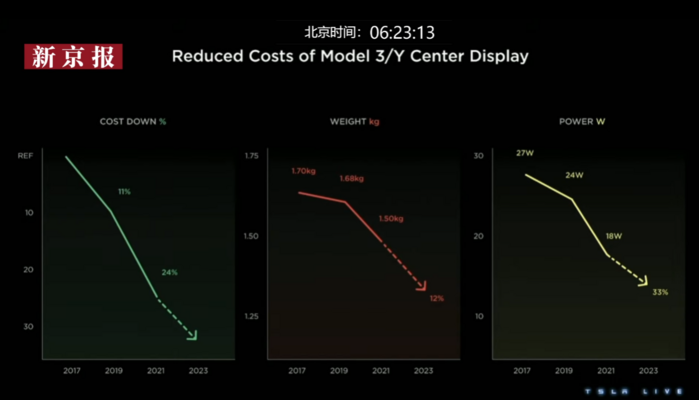
Between 2017 and 2021, the central control screen technology of Model 3 and Model Y has continuously improved, reducing costs by 24%, weight by 0.2 kg, and energy consumption to 18W. More importantly, these data will continue to decline in 2023.
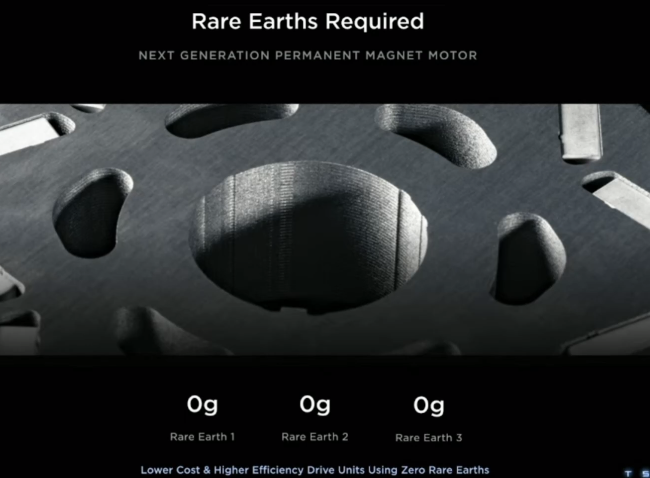
In addition, in the production of the next-generation electric motor, Tesla will no longer use rare earth resources, while maintaining high motor efficiency and reducing manufacturing costs.
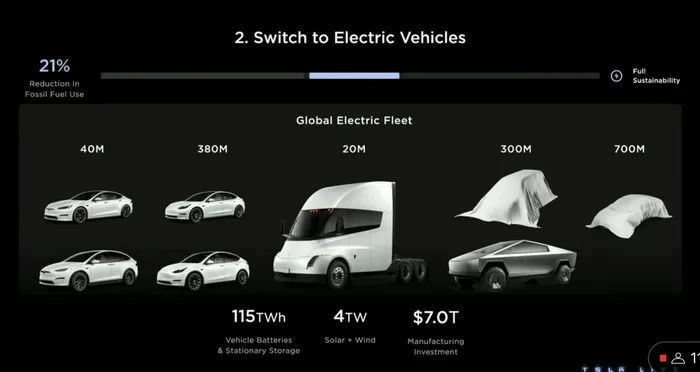 In short, Tesla reduces vehicle production costs, improves production efficiency, and increases production revenue through various unorthodox operations. This is one of the ways to achieve Tesla’s annual production goal of 20 million units, to obtain more output per unit of area while reducing production costs to attract consumers with lower prices.
In short, Tesla reduces vehicle production costs, improves production efficiency, and increases production revenue through various unorthodox operations. This is one of the ways to achieve Tesla’s annual production goal of 20 million units, to obtain more output per unit of area while reducing production costs to attract consumers with lower prices.

If successful, buying a Model 3 for 180,000 yuan is not a dream.
Summary
Fossil fuels are essential to today’s society and can even be said to be the foundation of civilization. To some extent, what Tesla wants to do is a revolution, by using renewable energy sources on a large-scale for social livelihood and production activities to replace fossil fuels, which is an unprecedented feat.
Of course, this goal is extremely difficult to achieve, and has no immediate impact on consumers. For consumers, being able to buy cheaper Teslas or having other car manufacturers lower their prices due to Tesla’s influence is more important. Therefore, we still look forward to the 180,000 yuan Model 3, which is the most important concern for ordinary consumers.
This article is a translation by ChatGPT of a Chinese report from 42HOW. If you have any questions about it, please email bd@42how.com.
